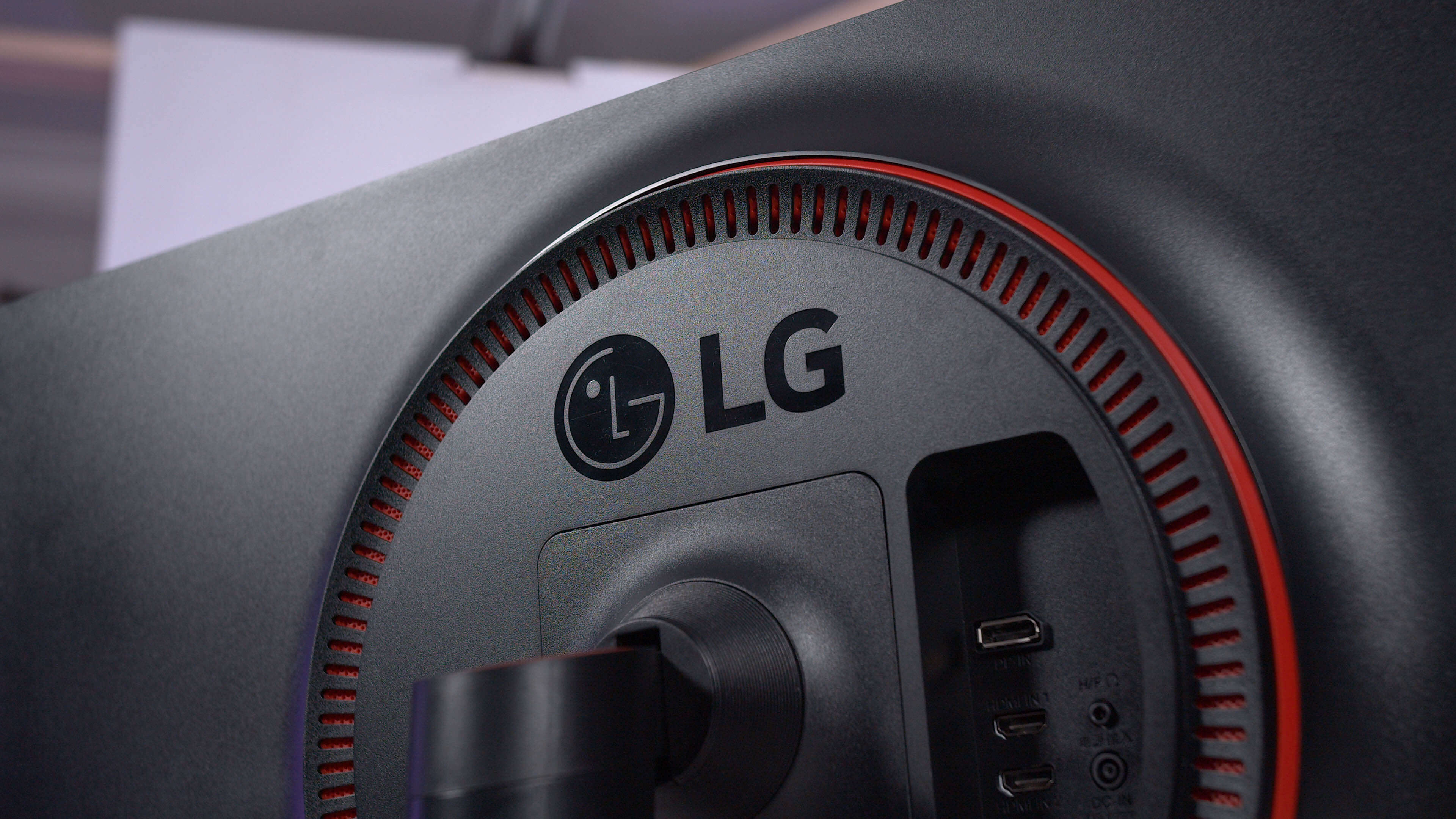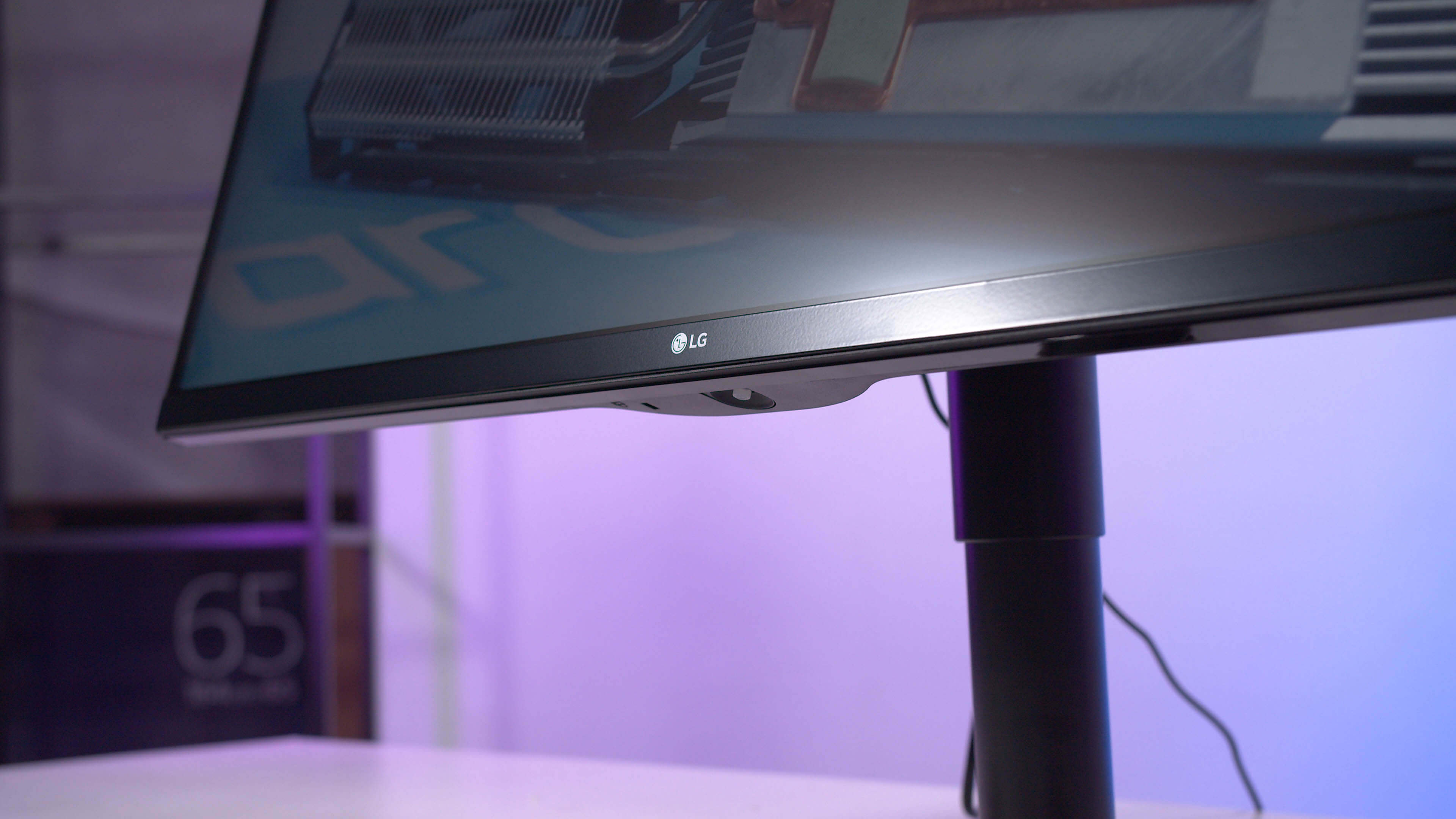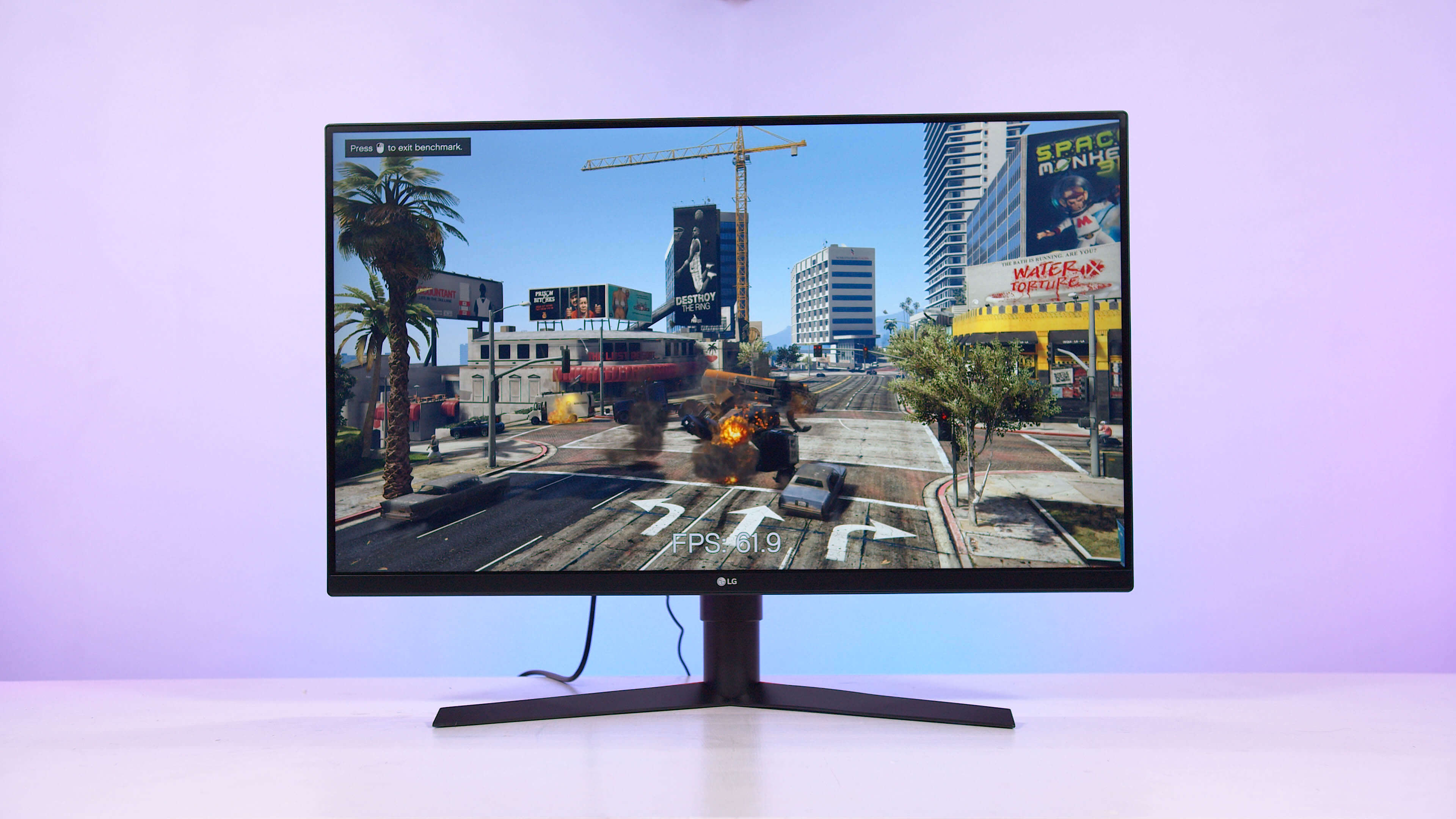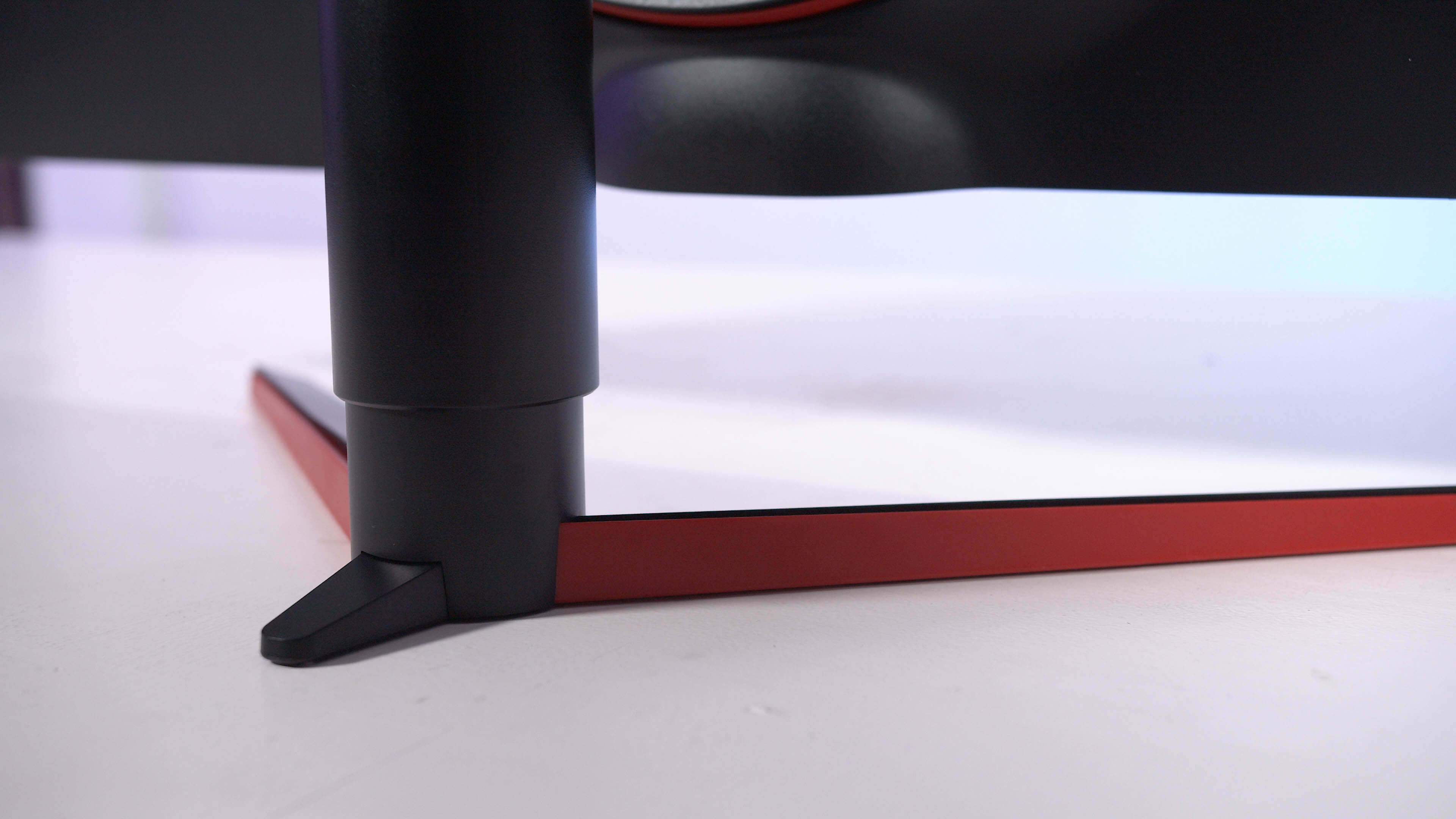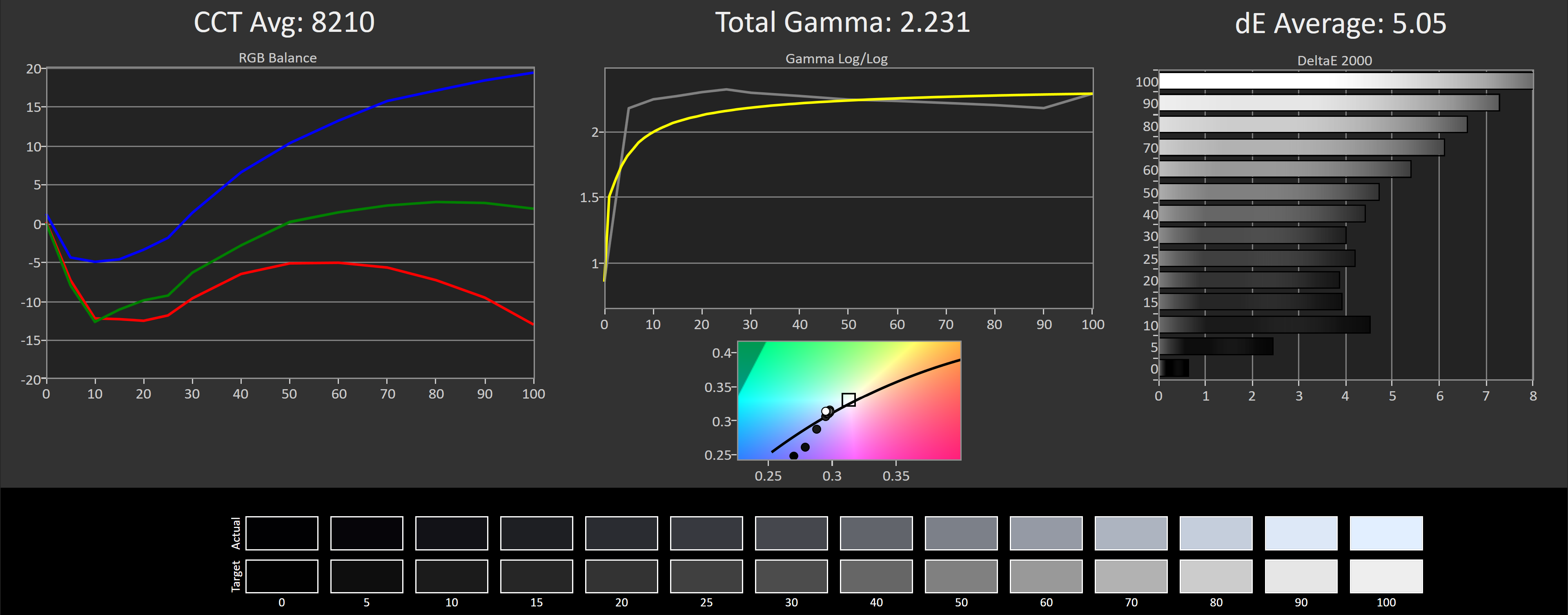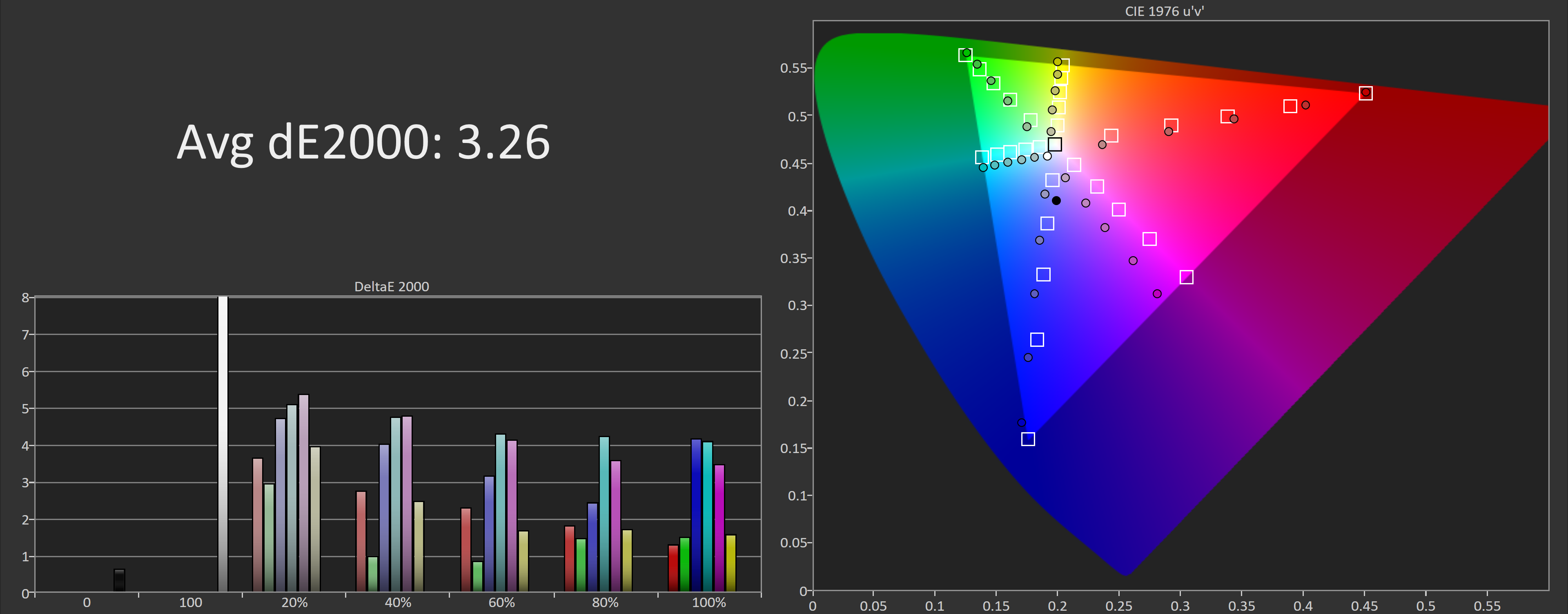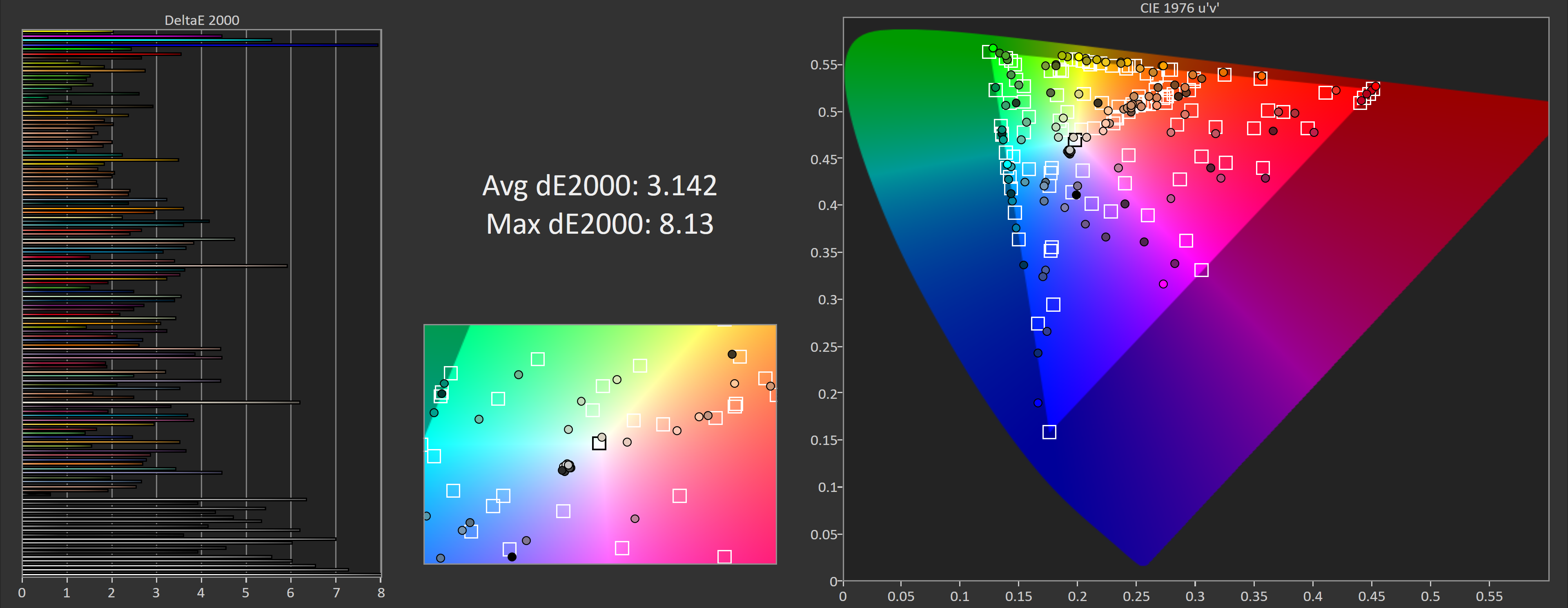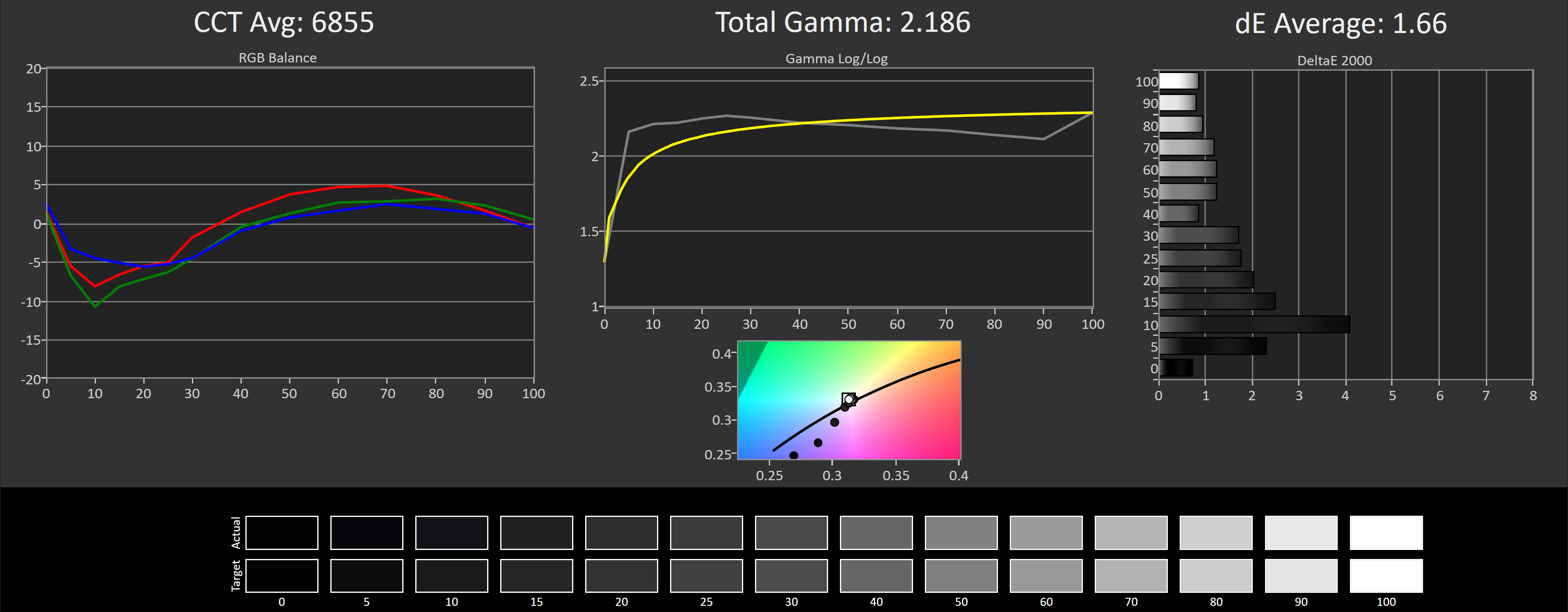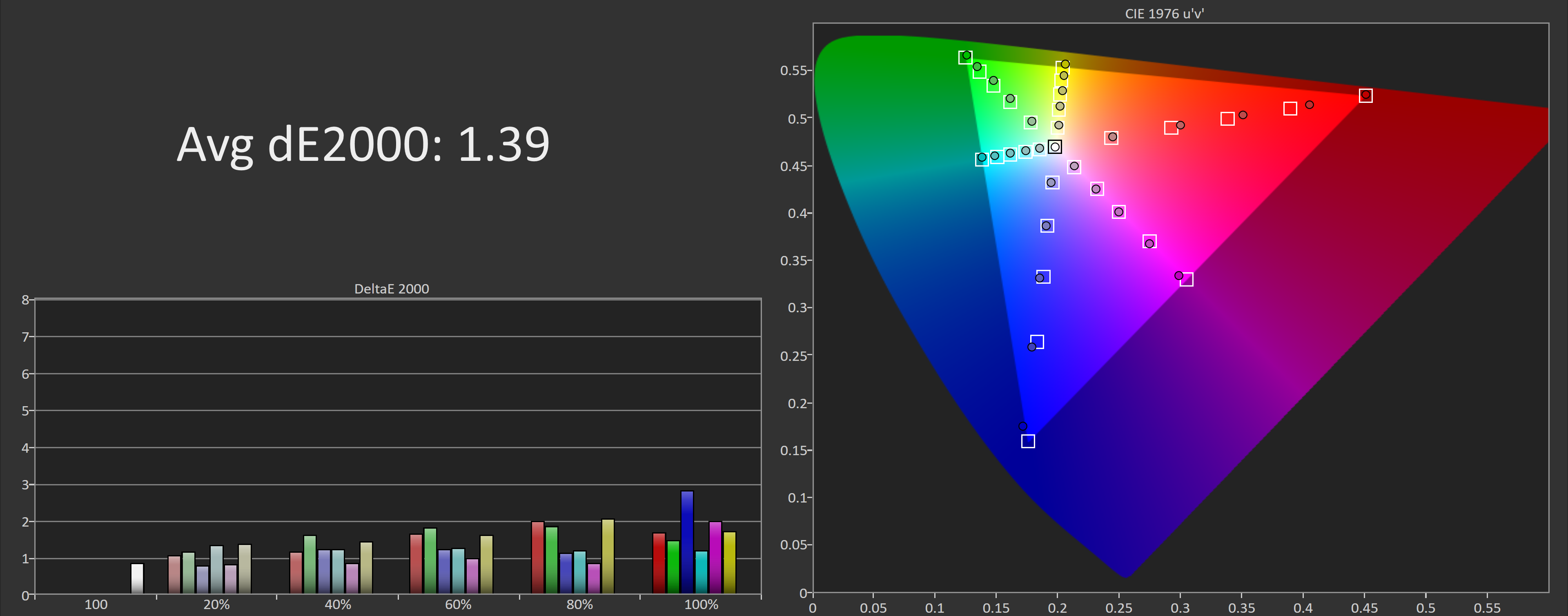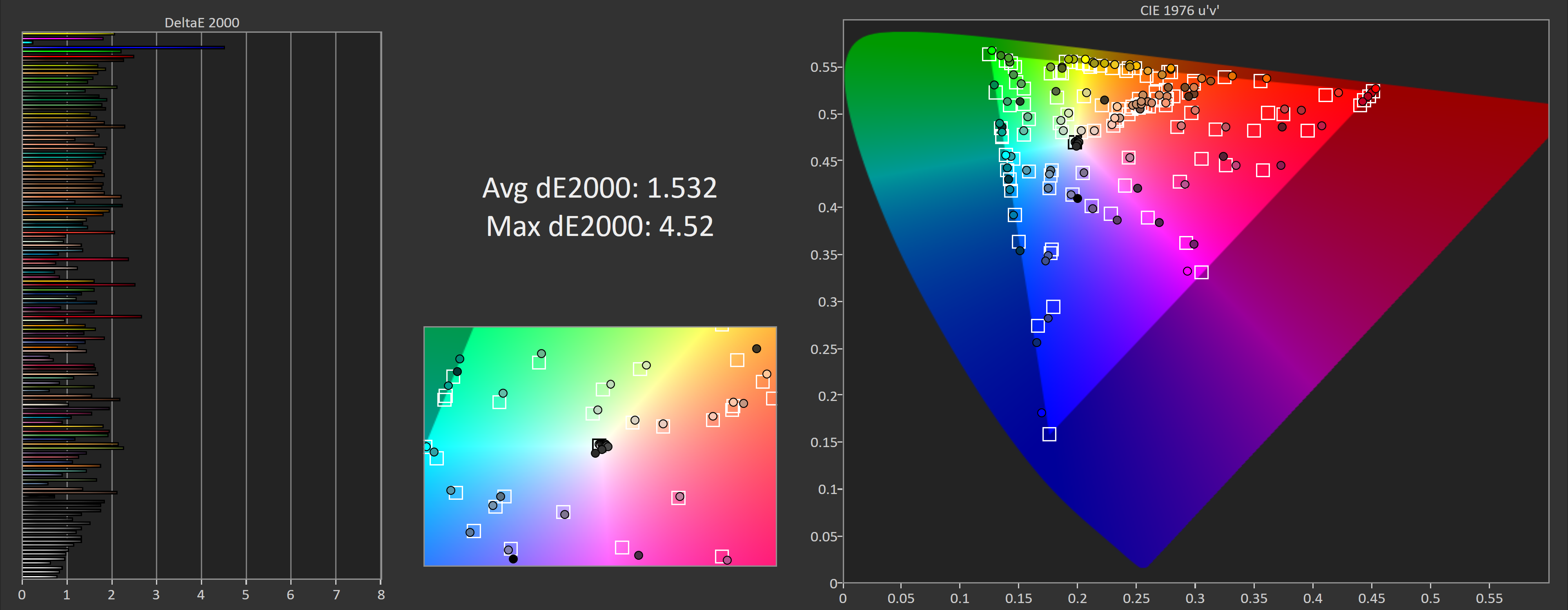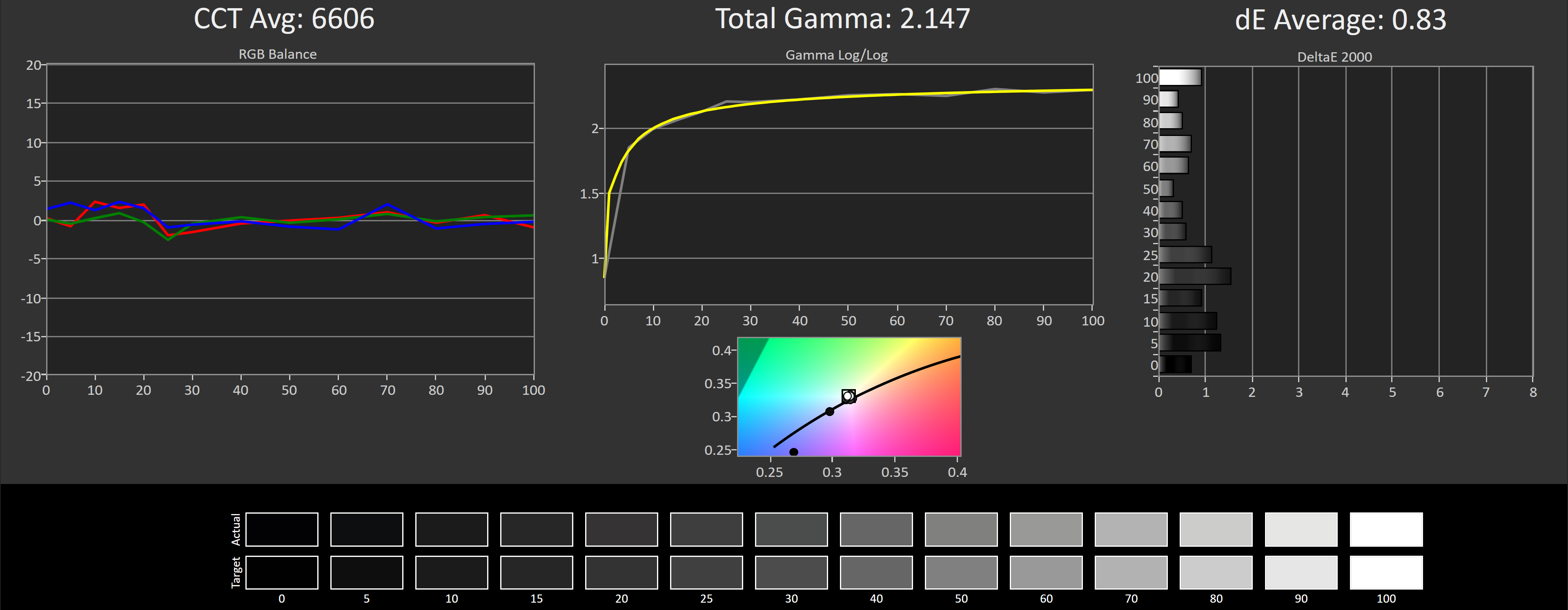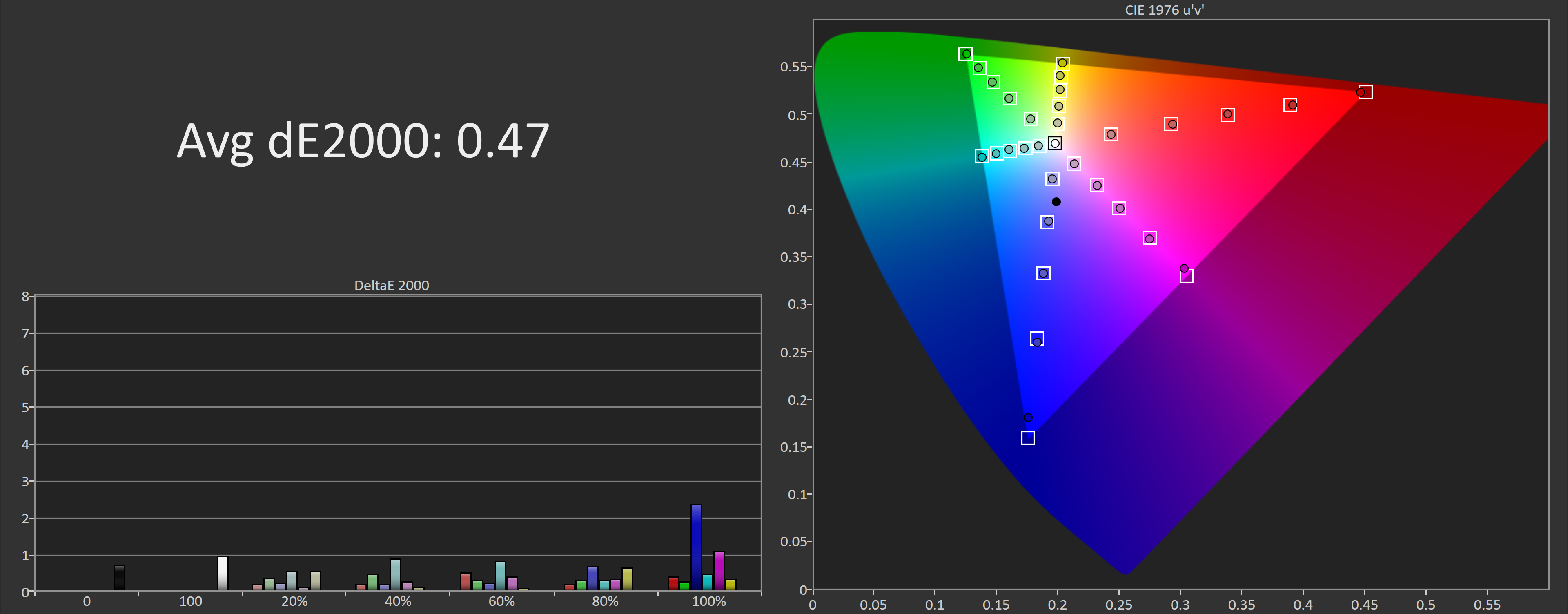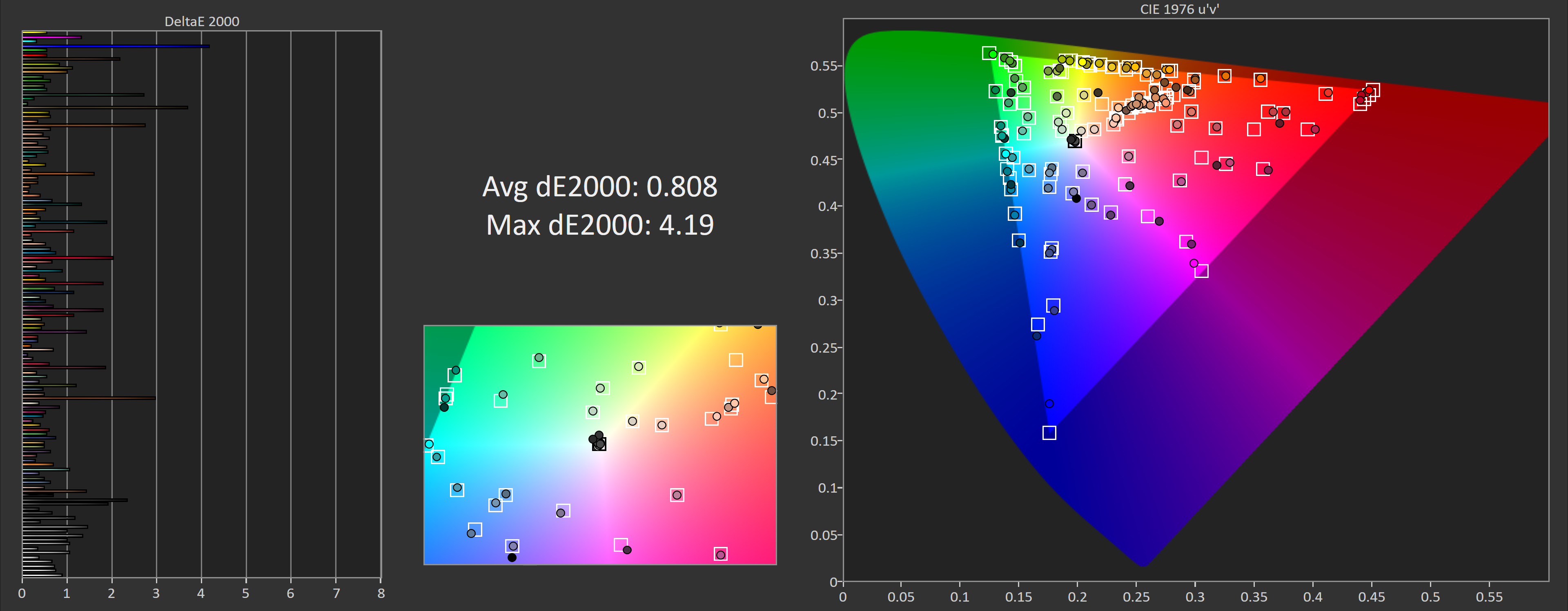We were excited about testing today's monitor because the product falls into one of our favorite categories: affordable but decent gaming monitors. Lots of companies try and target this market segment but it's difficult to come away with a winner, but we think LG might have just managed it with the 32GK650F.
This 32-inch monitor packs a 1440p resolution with a 144 Hz refresh rate, so it falls into that golden zone for modern gaming. But on top of that, it uses VA technology which is popular with gamers and perhaps the best for this type of display. Crucially, it's also flat, which will please the curved display haters. LG hasn't bothered with any HDR stuff, this is your standard 1440p high-refresh monitor, and as a result it's retailing right now for just $350.
This doesn't make it the cheapest 1440p 144Hz display on the market, you can often find others for around the $320, maybe $330 like the Viotek GN27DB and GN32DB. But there is genuinely lots to like about the LG 32GK650F which we'll get to in the performance section.
The 32GK650F uses LG's current UltraGear style, which includes a simple V-shaped stand made from black plastic, a basic front panel design with slim bezels on three sides, and again a simple black plastic rear that we think looks good. There are a few red highlights giving the design a bit of additional interest and there's no RGB LEDs which we kind of appreciate.
Despite its simple design, LG has included a lot of functionality. The stand is fully height adjustable and supports tilting, swivelling and even pivoting so you can use this monitor in a portrait orientation. The sturdiness of the stand is average but unlike a lot of other budget monitors in this class, it actually supports a good range of motion. The ports are easily accessible on the rear panel although cable management can be a little tricky. The main ports are DisplayPort and two HDMI ports plus a headphone jack. No USB hub here and the monitor does require an external power brick.
LG's UltraGear line seems to mostly use directional toggles for controlling the on-screen menu which is an advantage over some alternatives. There's also a few handy features to be found within, like a "motion blur reduction" mode that's basically black frame insertion or backlight strobing option. There's also some cheat features like crosshairs and black level adjustments.
For gamers, this monitor has a great feature set headlined by a 2560 x 1440 resolution and a maximum refresh rate of 144 Hz. It also has FreeSync support with low framerate compensation and it's compatible with Nvidia GPUs. Some of the absolute cheapest monitors with these specs do not include adaptive sync, so having it here is not only welcome but a requirement for any modern gaming display.
Performance
Response times for a VA panel are better than average. There are several response time modes but the default Fast option is the best, with Faster introducing a bit too much overshoot. Still, with the Fast mode we're looking at a grey to grey average response of 6.50ms, which is faster than the required 6.94ms transition to fully support a 144 Hz refresh rate. Aside from a few particularly slow transitions, this panel is properly capable of a 144 Hz refresh around 80% of the time which is better than average for a VA display.

In fact, when looking over the charts you can see that of the 32-inch 1440p 144Hz VA monitors we've reviewed - and there have been a few, it's a popular product type - the 32GK650F is the fastest. The average response time for this type is 7.7ms so we're about 1ms faster than expected. It's a great result for a VA and puts it within IPS territory.
Input lag is also decent, coming in at 3.3ms which is within the normal bracket we see for gaming monitors. This gives an overall latency of below 10ms which is what we like to see.
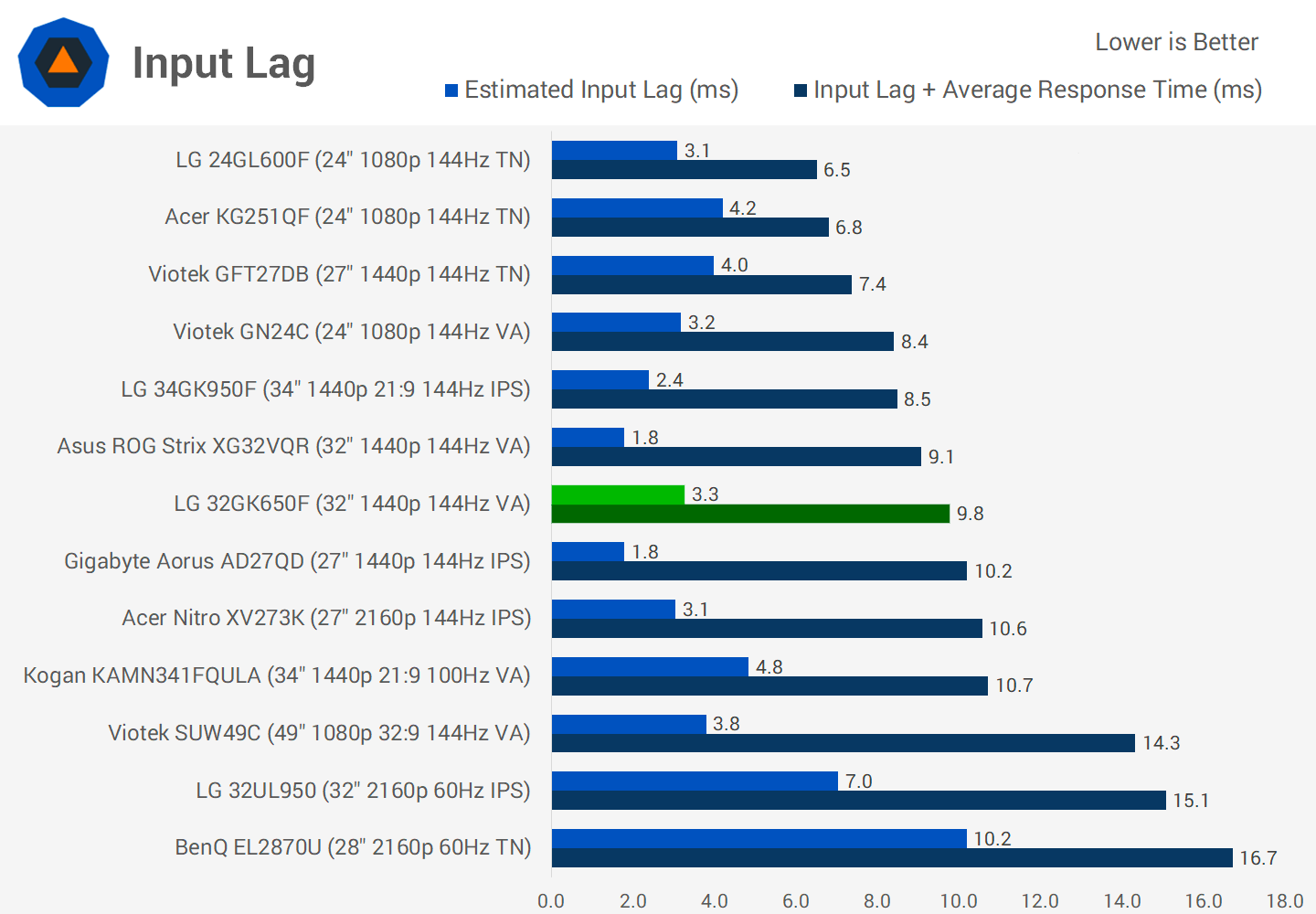
LG lists a typical contrast ratio for this display of 3000:1 although in our testing we recorded something closer to 2400:1, which is a fair bit lower but not unusual for this sort of VA. With this result it still sits around its competitors; marks which all slot below 3000:1 as well. Even at 2400:1 the contrast ratio is at least double a typical IPS and will still give you the contrast benefits of this technology. As for brightness, 320 nits is fine for most viewers, particularly as there's no HDR support.

As for color reproduction, this is just your standard sRGB complaint panel with no wide gamut support. Although that does make it easier to work with in most cases outside of HDR modes, your standard content is mastered for sRGB so to avoid oversaturation you do want an sRGB monitor.
Default out of the box performance isn't great though, and that's largely down to incorrect greyscale performance. A white point of 7840K, which balloons out to an average of 8120K over the greyscale range, means this monitor ships with a cold, blue tint. Some users like this, but for it to be correct you actually want a warmer 6500K white point. So a greyscale deltaE average of 5.05 isn't surprising here.
Default Calibration
It's a similar story with saturation performance, with a cold white point you can see that the rest of the color points have been translated, so everything has been dragged colder than expected. We get a deltaE average here of 3.26 with particularly poor blue, cyan and magenta performance. And you'll see similar numbers with ColorChecker.
Luckily, the incorrect white point can be corrected through a few tweaks in the on-screen menu. For my unit, I set the user color controls to Red 50, Green 43 and Blue 34 along with a Brightness of 61 for approximately 200 nits. These settings may not apply perfectly to every 32GK650F due to panel variance but it should bring things a lot closer to accurate.
With these settings applied and no formal calibration, the CCT curve drastically improved to an average of 6855K which led to a greyscale deltaE average of just 1.66 which is pretty darn accurate for just a few setting tweaks. This helped out a lot with saturation, leading to a deltaE average of 1.39, and ColorChecker improvements to 1.53. With averages below 2.0 across the board, this sort of performance is very accurate.
After OSD Settings Tweak
From here you could go and perform a proper calibration which tightens things up further. It sets even better gamma, but for most users we think these basic tweaks will suffice, especially if your model has shipped with a noticeable blue tint.
After Calibration
Lastly we have uniformity which as expected for a VA panel is a touch on the mediocre side. The center channel is good enough but as you look to either edge there's a bit of a deviance relative to the center. Nothing drastic, it is somewhat noticeable but for gaming it's not a big deal and you won't get much better from a competing monitor.
Conclusion
All up, the LG 32GK650F is our new favorite affordable high-refresh gaming monitor, and that's not a crown that we give out lightly or easily.
We've spoken before about how 1440p 144Hz is our favorite display hardware for gaming right now - it's that great combination of resolution and refresh rate that's achievable with modern GPU tech - and the 32GK650F delivers that with the best feature set at a great price.
Previously we have recommended monitors like the Viotek GN32DB or the Pixio PX329 in this category. The Viotek option is curved and about $330, while the Pixio is flat and $350. But with the LG 32GK650F also slotting in at $350, it simply offers more than the alternatives at a matching price point.
Specifically, the 32GK650F has faster response times, which reduces blur and provides a true 144Hz experience, unlike the Pixio which is advertised as 165Hz but really can't deliver true 144Hz. The LG remains a large 32-inch flat VA with good contrast which we feel is better than curved alternatives and it comes with a better stand that's height and pivot adjustable, neither of which the Viotek nor Pixio offer. Crucially, this monitor is also much easier to find in retailers worldwide although pricing will vary depending on the region.
Once again, for the price, LG brings no glaring flaws and the best value proposition for 1440p gaming. The 32GK650F is easy to recommend.
